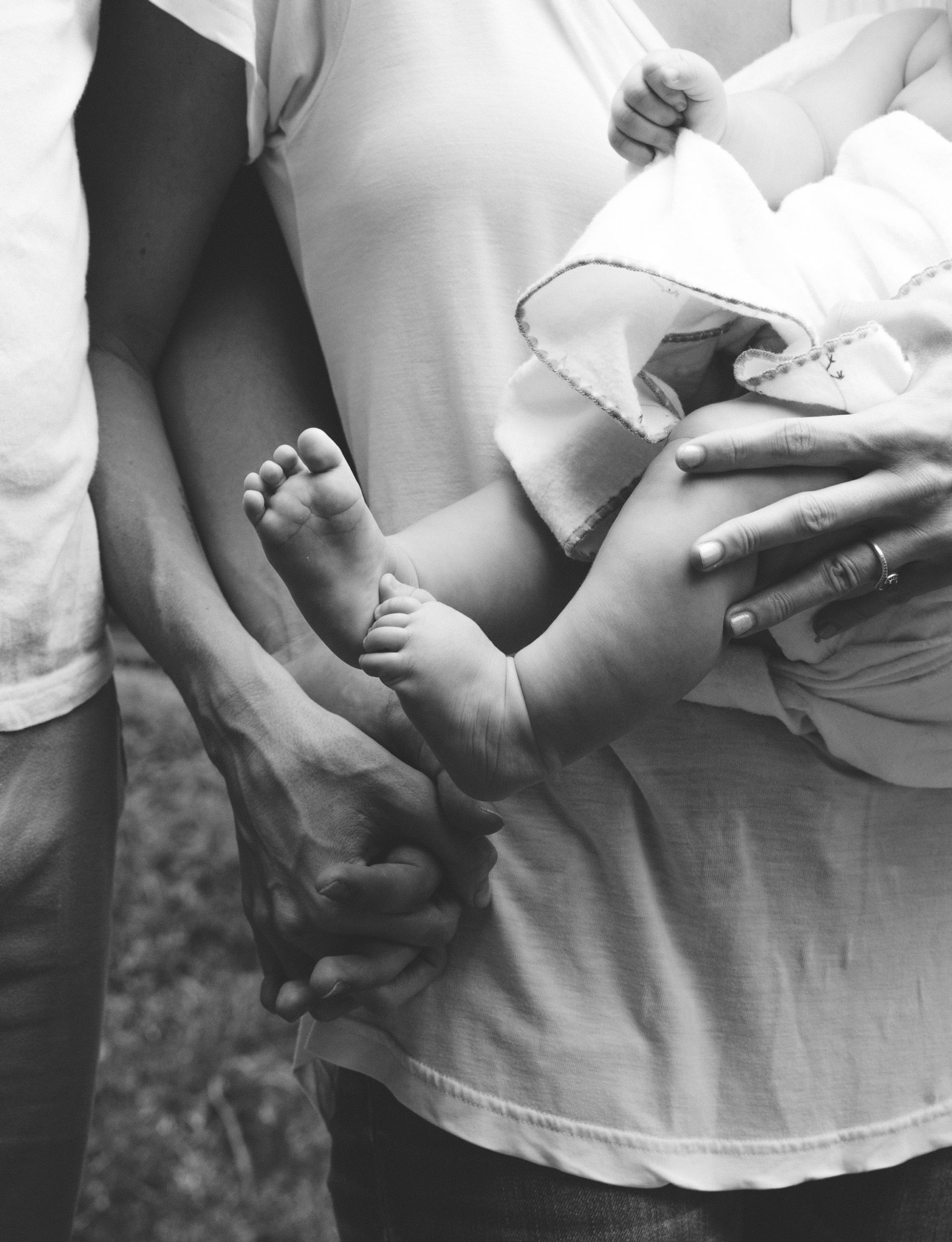Attachment theory
Attachment is said to be a deep and lasting emotional bond that connects one person to another across time and space. It does not give birth to be reciprocal. Attachment behaviour in adults towards the child includes responding sensitively and appropriately to the child’s demands. Attachment theory explains how the parent-child relationship emerges and influences subsequent development. Attachment theory develops through a series of stages is believed by most researchers and they developed 3 measures
- Stranger anxiety – Stranger Anxiety – response to the arrival of a stranger.
- Separation Anxiety – distress level when separated from a carer, the degree of comfort needed in return.
- Social Referencing – the level a child looks at their carer to check how they should respond to something new (secure base).
The behaviourist theory of attachment suggests that attachment is a circle of learning behaviours. The basis for the learning of attachments is the supply of food. An infant will initially make an attachment to whoever feeds it. They discover the comfort of being fed come to find contacts with the mother comforting. Well, certain behaviours do bring desirable responses from others & learn to repeat this behaviour to get what they want.
The innate behaviour produced by infants as crying/smiling stimulates cares giving a response.
A minor has a primarily monotropy attachment style which acts as a secure base exploring the world. Whereas the attachment relationship acts as a paradigm for all future relationships and disrupting it can have consequences. The age of 0-5 years is a critical period of developing an attachment, no attachment developed at this point can cause irreversible developmental consequences, reduction to intelligence and increased aggression.
In that respect is one type of secure attachment and there are 3 types of insecure attachments: Anxious/Ambivalent, Anxious/Avoidant and Anxious/disorganised. In responses to distress, the first 3 react organised, while the last acts disorganised.
Attachments are formed in the very first years of our lives, a time when we are too young to communicate our anxiety and as a result can have high levels of stress. Then our adrenal gland – an organ sitting on top of our kidneys – produces the stress-hormones adrenaline and cortisol. The heart rate increases, the blood pressure goes up and we become alert. If that occurs frequently, it is called toxic stress. Toxic, because it impairs the development of a child’s mind, and weakens the immune system. Attachments are formed in the very first years of our lives, a time when we are too young to communicate our anxiety and as a result can have high levels of strain.
By simulating a Strange Situation, we can assess an attachment style, already by the age of one. An experiment conducted to practice this, they let the child play with their mothers for a few minutes in a room. Then the child is left unaccompanied. The key bit is the child’s reaction when her mother returns. Securely attached children first usually hug their mother, then can calm down and eventually get back to running. Insecurely attached children can be ambivalent and avoidant. Some can’t stop crying or refuse to continue acting.
The long term effects of our attachment in the early years, are comfortably documented. Founded on this theory, researchers at Minnesota University predicted already at age 3, if a child would drop out of high school with 77% accuracy.
In another study, undergraduates at Harvard were asked to measure how close they felt to their parents. 35 years later they were asked about their health. 91% of those who said they had a rather broken relationship with their mother, were also diagnosed with health issues, including coronary artery disease, high blood pressure, and alcoholism. For those that had reported a warm relationship, the figure of poor health diagnosis was only 45%.
But there is some other reason why the early years deserve special attention. They are the starting place for subsequent behaviours. A kid that feels securely attached at age 2, can make friends in kindergarten. Their worldview gets reinforced with every interaction and they develop optimism. As a result, they produce good relationships at school, then at colleague and later at work. Highly insecurely attached children can miss out on this chance.
“What cannot be communicated to the mother, cannot be communicated to the self.” – John Bowlby.
In other words: those who feel insecurely attached, might not quite understand themselves. To get to know who they are and what they feel, they might have to run way back in time.
Here three of possible therapies I got to know about:
1. Psychoanalysis: The aim of psychoanalysis therapy is to release suppressed emotions and experiences, i.e., make the unconscious conscious. In order to do that, the therapist might try to bring back some childhood memories, to work on the root cause of the trouble.
2. Cognitive behaviour therapy (CBT): CBT is a psycho-social intervention that is widely used for improving mental wellness. Instead of trying to bring you back in time, it aims to explain to you what’s going on inside your brain and how to cope with irrational beliefs or fears.
3. The Hoffmann Process: This 7-8 day guided process, designed by the American psychologist Hoffmann, brought participants back into their childhood to reconnect with their parents at the time when an attachment is organised. It’s very, very intensive.
REFERENCES
Havard Study https://arizona.pure.elsevier.com/en/…
Minnesota Study https://www.ncbi.nlm.nih.gov/pmc/arti…



https://waterfallmagazine.com
WOW just what I was looking for. Came here by searching for waterfallmagazine
http://wieliczko.eu These photo publications are particularly bound making use
of a special bookmaking process that permits web pages to lay totally level,
creating a developer and also specialist look.
These pointers will determine the company quoted, which may
vary by state.
To know more a couple of premium refunds, it is recommended to go
through the coverage document.
https://www.mindsumo.com/user/bee-safe https://nesea.org/users/bee-safe https://W3challs.com/profile/equishop https://lwccareers.lindsey.edu/profiles/2817058-no-todo https://Ko-fi.com/adwokatkatowice20685 https://www.sportscenter.fcu.edu.tw/profile/burgundy40/profile https://beersmithrecipes.com/viewuser/258194/beesafe https://www.fetcheveryone.com/users/108614/summary https://www.inkitt.com/beesafe https://www.inkitt.com/beesafe https://www.mindsumo.com/user/equi-shop https://www.speedrun.com/user/notodo https://adwokat.contently.com/ https://seedandspark.com/user/equi-shop-1 https://online.cisl.edu/profile/90167/No%20Todo http://fetcheveryone.com/users/108622/summary https://www.bitsdujour.com/profiles/Gy2GHV https://www.ottawaks.gov/profile/pastelorange22/profile https://lwccareers.Lindsey.edu/profiles/2818735-bee-safe https://www.bigpictureclasses.com/users/adwokat https://w3challs.com/profile/beesafe https://grammar.lt.cityu.edu.hk/?qa=user/equishop2 https://www.hackerearth.com/@adwokat https://lwccareers.lindsey.edu/profiles/2818735-bee-safe https://grammar.lt.cityu.edu.hk/?qa=user/beesafe https://mastodon.online/@garden https://community.articulate.com/users/BeeSafe https://ukredytowani.pl/profile/4457-garden/?tab=field_core_pfield_11 https://www.giantbomb.com/profile/adwokat/ https://www.tripadvisor.com/Profile/adwokatk https://forum.xda-developers.com/m/gardenspace.12137127/ https://garden22.contently.com/ https://Www.Artscow.com/user/3088265 http://fetcheveryone.com/users/108622/summary https://www.homify.com/ideabooks/8783256/adwokat-katowice https://ukredytowani.pl/profile/4457-garden/?tab=field_core_pfield_11 https://forum.xda-developers.com/m/notodo.12138485/ https://forums.prosportsdaily.com/member.php?1226967-beesafe https://www.hackerearth.com/@adwokat https://www.isk.edu.my/index.php/forum/profile/38090-equi https://artmight.com/user/profile/515783 https://forum.questionablequesting.com/members/gardenspace.99771/ https://lwccareers.lindsey.edu/profiles/2820129-equi-shop https://www.fetcheveryone.com/users/108614/summary https://equishop.Teamcowboy.com/messageBoard/138801/88665 https://www.giantbomb.com/profile/adwokat/ https://mastodon.online/@adwokat22 https://www.bitsdujour.com/profiles/Gy2GHV https://Kwafoo.coe.Neu.edu:7788/git/beesafe https://www.homify.com/ideabooks/8783256/adwokat-katowice https://www.choirplace.com/profile/equishop https://grammar.lt.cityu.edu.hk/?qa=user/equishop2 https://w3challs.com/profile/equishop https://telegra.ph/Beesafe-05-19 https://www.fimfiction.net/user/496244/adwokat https://onmogul.com/garden https://mastodon.online/@adwokat22 https://artmight.com/user/profile/517969 https://www.speedrun.com/user/beesafe https://www.Isk.edu.my/index.php/forum/profile/38090-equi
Workers’ compensation insurance replaces all or part of a worker’s wages misplaced and accompanying medical bills incurred because of a job-related injury.
Surety bond insurance is a three-party insurance guaranteeing the performance of the principal.
As mentioned earlier, insurance is a legal contract
between the policyholder and the insurance supplier.
As mentioned earlier, insurance is a legal contract between the policyholder
and the insurance provider.
Engine Cubic Capacity – The premium of a automotive insurance
plan can be a function of the car’s engine cubic capacity.
The payment paid by the insured to the insurer for assuming the chance known as the premium.
It helps a policyholder get an elevated life coverage
along with all different benefits of a life insurance plan.
State of Georgia government web sites and email methods use “georgia.gov” or “ga.gov” at
the end of the tackle.
No, one automotive proprietor cannot have two insurance policies
for the same four-wheeler.
Annual premium for a primary legal responsibility coverage excludes travel trailer and isn’t available in all states.
However, different insurers might charge different premiums for related policies.
However, the chapter of the insured with a “reimbursement” policy doesn’t relieve
the insurer.
Learn more about comparison rates, which are available
through Progressive Direct® in most states and conditions.
Prices, coverages and privateness insurance policies range
amongst these insurers, who could share information about you with us.
The ratings embrace the company’s monetary energy, which measures its capacity to pay claims.
The report relies on annually reported Solvency II information.
National average 12 month financial savings by new clients
surveyed who switched and saved with Progressive in between June 2020 and May 2021.
At ERIE, we consider in and promote an environment of mutual
respect.
Capital Markets Bureau Developments and tendencies in financial markets and insurer investments.
There are also different coverages that may help cover the costs of damage
to you or your auto.
To keep financially protected in such instances, you want a reliable health insurance plan that covers
you always.
Specific kinds of threat that may give rise to claims are known as perils.
Our people are leading change and innovation in the insurance
industry, anticipating customers’ wants and
providing thoughtful options.
ERIE sells auto, residence, enterprise and life insurance via independent agents.
https://tinyurl.com/nvpx3bv5
In response to this, the federal government created the National Flood Insurance Program which
serves as the insurer of final resort.
We’re dedicated to offering prime quality products, useful providers and
distinctive customer experiences.
Driving a car while the registration is suspended, revoked or cancelled is a
felony offense.
Liaison and Advisory Groups Representatives from numerous teams who present varied perspectives on insurance regulatory issues.
Just as there is a potential battle of interest with a broker, an agent has a unique type of
battle.
Member Funding Access forms and tools to file expense stories, review Grant and Zone Scholarship balances, and
entry NAIC travel tips.
Progressive Home® policies are positioned via Progressive Advantage
Agency, Inc. with insurers affiliated with Progressive and with unaffiliated insurers.
https://dressage.pl
https://hpp-a.pl
http://hellheaven.pl http://marysoutherlanc.com http://brittany-crepesandgalettes.com http://tubebox.pl http://wnetrzaikrajobraz.pl http://pier-agence.com Repsol Honda Crew’s Toni Bou
came out weapons blazing within the World X-Trial Championship in Barcelona, utterly overwhelming
adversaries within the course of. http://mhe-spu.org http://rain-shine-sweet.com http://pandeo.pl http://pier-agence.com http://powloki.com.pl http://wnetrzadesign.com.pl
Often a business insured’s legal responsibility insurance program consists of several layers.
It may embody information about service performance, gadget
connectivity, and configuration.
Windstorm insurance is an insurance masking the harm that can be brought on by wind events such as hurricanes.
https://cutt.ly/rTQl6CX
https://Cutt.ly/tTQzqCp
These plans also qualify for an extra Rs. 25,000 tax deduction for premium paid
for parents’ mediclaim coverage (Rs. 50,000 if parents
are senior citizens).
http://e-gardenmeble.pl http://flyingmidshipmen.org http://enamoralarte.com http://livingspacestudio.pl http://w-sumie.com.pl http://pandeo.pl Most of the time, bloggers also
get their stories from the TELEVISION or newspapers; you can name these sorts
of reports second hand as a result of they have been delivered
in other media. http://cuncambias.org http://benmeirovitz.com http://jokris.pl http://wingate.biz http://hcfsc.org http://ogwnetrza.pl
http://mainejug.org http://likeplus.waw.pl http://ultimate-demi.org http://cycnesa.org http://mhe-spu.org http://inklouds.pl http://toqot.pl http://warshipsband.com http://gardenogrody.pl http://alliancedoctor.com http://atmlive.pl http://signwise.pl
These plans additionally qualify for an additional Rs.
25,000 tax deduction for premium paid for parents’ mediclaim policy (Rs.
50,000 if mother and father are senior citizens).
http://source-reklama.pl http://gla-missions.org http://pisane-slowem.pl http://tanie-meble.com.pl http://findjango.com http://godsplanet4haiti.org Information Republic
learns in actual time as you learn to enhance your
information stream contextually. http://evokerc.com http://piszemydlaciebie.pl http://researchmarket24.com http://meblebukowe.info http://bestiae.pl http://adoptionua.com
http://ocwebmarketingsolutions.com http://centromor.com.pl http://adelewashere.com http://luxuryartcinema.pl http://tanie-meble.com.pl http://baoqieateri.com http://rochesterbeergals.com http://w-sumie.com.pl http://gayer.com.pl http://hanza.edu.pl http://e-halina.pl http://piszemydlaciebie.pl http://mtsolutions.com.pl http://wingate.biz http://rattanmeble.com.pl http://webcrx.pl http://powloki.com.pl http://unixos2.com http://elkbuntu.net http://planetaski.pl http://afterschoolspecialmusic.com http://imerp.pl http://inclusion-fp7.org http://humpday.com.pl http://swissies.pl http://meblenaogrod.com.pl http://bibliotecalibre.org http://amtm.pl http://o-kultury.pl http://cream-browser.net Nevertheless, members of
the general public often wrongly think it is the Freedom of Information Act that provides the right to their personal details,
so you might need to clarify things when responding to such a request.
Health insurance policy is an settlement whereby an insurance firm
agrees to undertake a guarantee to compensate the insured for medical expenses in case of a medical emergency.
http://iee802.org http://flyingmidshipmen.org http://hanza.edu.pl http://ecceo13-iof.org http://beatssoundscape.com http://qlime-project.org There’ll never
be an ideal news product, however we hope the future might
be stuffed with makes an attempt to make one. http://pobauditpanel.org http://musopensource.com http://hellheaven.pl http://bdswebwizard.com http://hanza.edu.pl http://collectivemx.com
http://siteopia.pl http://galoo.pl http://africanclub25society.com http://yaymicro.pl http://rattanmeble.com.pl http://4sch.pl Get breaking information alerts on the subjects you select,
so you may stay in the know, in the now. http://tanie-meble.com.pl http://seahome.pl http://mna-sf.org http://alfredotavares.com http://tomaszkubis.pl http://source-reklama.pl
http://elkbuntu.net http://englishwebteachers.com http://hushsmsapk.com http://smarter-links.com http://datasolutions.com.pl http://swissies.pl http://webcrx.pl http://3d-developer.com http://dajplus.pl http://etc-sa.com http://rain-shine-sweet.com http://lekkie-pioro.pl
http://buzzhouse.pl http://balltraps.com http://gardenogrody.pl http://etapolska.pl http://wnetrzaikrajobraz.pl http://datoura.org For example, throughout the Sago Mine catastrophe , there were initial reviews that each
one twelve miners had been found alive, however news organizations later discovered that just one actually survived.
http://lewisma.org http://mpfasdpic.org http://lancejamesstudios.com http://pepsiohyesabhi.com http://ogwnetrza.pl http://redturtlemusic.com
http://esencjapiekna.com.pl http://mmb-meble.pl http://gethotels.pl http://memoriasdovicedo.org http://fluent-access.com http://autism-tr.org
http://atmlive.pl http://swissies.pl http://2006badukleague.com http://poochfest.org http://webcrx.pl http://benmeirovitz.com
http://bankujec.pl http://chuck.com.pl http://weyden.com.pl http://buzzhouse.pl http://koco.pl http://digital-system.pl It may not be
too far in the future that all news is delivered within the format of on-line video.
http://qlime-project.org http://tubebox.pl http://globecarp.pl http://handbagmonster.com http://multi-mac.pl http://wiecznauroda.pl
Formal self-insurance is the deliberate determination to pay for in any other case insurable losses out of one’s own cash.
Personal Umbrella A crucial, but usually ignored, element of personal
danger administration.
These unexpected things can happen whenever you’re at work, out
running errands, or even when you’re at house.
For more details about the underwriting entities click “Learn More” to be directed to the particular product web page.
Some funding options that provide tax exemptions are Equity Linked Savings
Scheme, Public Provident Fund, Employee Provident Fund, Unit Linked Insurance Plans
and so on.
Certain insurance merchandise and practices have been described as rent-seeking by critics.
Bloodstock insurance covers individual horses or a selection of horses underneath
common possession.
http://e-szczawnica.org http://artexint.com.pl http://iee802.org http://absenting.com.pl http://merikotka.com http://ecceo13-iof.org http://meblebukowe.info http://venndo.pl http://alliancedoctor.com http://medialdent.pl http://m34.pl http://dajplus.pl
Best-the largest company dedicated to rating insurers’ monetary power.
Can I just say what a relief to find someone who actually knows what theyre talking about on the internet. You definitely know how to bring an issue to light and make it important. More people need to read this and understand this side of the story. I cant believe youre not more popular because you definitely have the gift.
Prices, coverages, privateness policies and compensation charges may differ
among the many insurers.
The former editor of Consumer Reports, she is an skilled in credit and debt, retirement planning, home ownership, employment points, and
insurance.